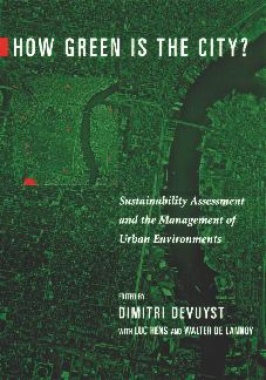This book deals with practical ways to reach a more sustainable state in urban areas through such tools as strategic environmental assessment, sustainability assessment, direction analysis, baseline setting and progress measurement, sustainability targets, and ecological footprint analysis.
- Table of Contents
- List of Boxes
- List of Tables
- List of Contributors
- List of Abbreviations
- Acknowledgments
- Introduction to Sustainability Assessment at the Local Level, by Dimitri Devuyst
- The Conundrum of Urban Sustainability, by William E. Rees
- Part I. Sustainable Development in Urban Areas, by Dimitri Devuyst
- 1. Sustainable Development in Urban Areas: An Overview, by Rodney R. White
- 2. Local Agenda 21: The Pursuit of Sustainable Development. in Subnational Domains, by William M. Lafferty
- 3. The Eco-City Approach to Sustainable Development in Urban Areas, by Mark Roseland
- 4. Sustainable Development at the Local Level: The North-South Context, by Dimitri Devuyst
- Part II. Urban Sustainability Assessment Tools in the Decision-Making Process ,by Dimitri Devuyst
- 5. Linking Impact Assessment with Sustainable Development and the Introduction of Strategic Environmental Assessment, by Dimitri Devuyst
- 6. Strategic Environmental Assessment and the Decision-Making Process, by Lone Koernoev
- 7. Sustainability Assessment at the Local Level, by Dimitri Devuyst
- 8. Sustainability Assessment in Practice: Case Studies Using the ASSIPAC Methodology, by Dimitri Devuyst
- 9. Direction Analysis: An Example of Municipal Sustainability Assessment in Norway, by Carlo Aall
- Part III. Tools for Setting a Baseline and Measuring Progress in Urban Sustainability Assessment, by Dimitri Devuyst
- 10. Indicators of Sustainable Development, by Thomas van Wijngaarden
- 11. Indicators for Sustainable Development in Urban Areas, by Elizabeth Kline
- Additional Examples of the Use of Sustainability Indicators at the Local Level, by Mark Roseland
- 12. Sustainability Reporting and the Development of Sustainability Targets, by Dimitri Devuyst
- 13. Global Change, Ecological Footprints, and Urban Sustainability, by William E. Rees
- Part IV. Tools for Sustainability Assessment at the Household Level, by Dimitri Devuyst
- 14. Striving for Sustainability via Behavioral Modification at the Household Level: Psychological Aspects and Effectiveness, by Paul Harland and Henk Staats
- Global Action Plan Research in Switzerland, by Susanne Bruppacher
- 15. Sustainable Lifestyle Assessment, by Dimitri Devuyst and Sofie Van Volsem
- Linking Sustainability Assessment to a Vision for a Sustainable Future, by Dimitri Devuyst
- Index

